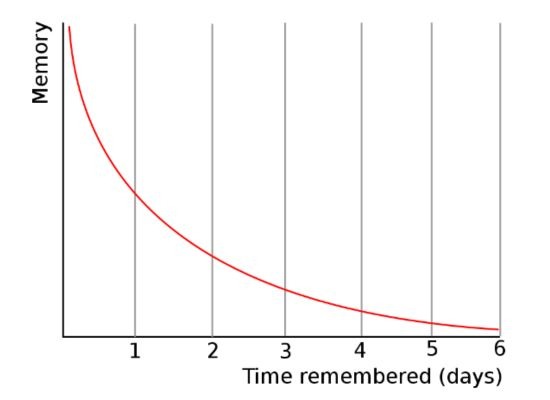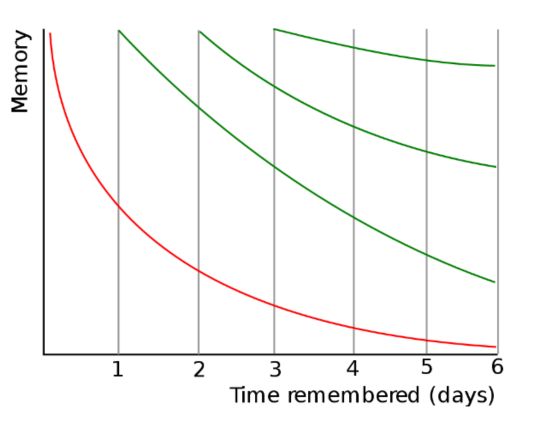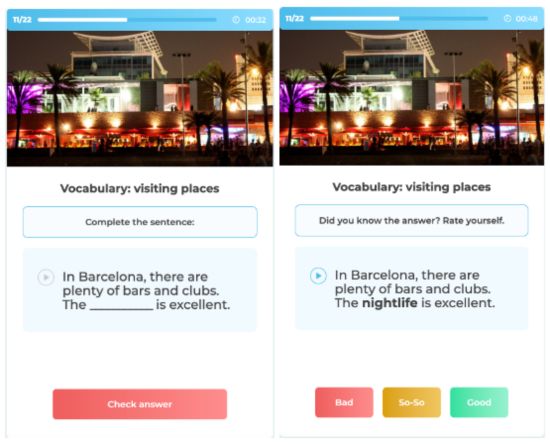This guest article was written by Nestor Kiourtzidis, Co-Founder of Linguahouse, a leading provider of teaching resources for ESL/EFL teachers. Linguahouse provides resources and tools for ESL teachers, students, and language schools, with worksheets and lesson plans for young learners through adults and the Expemo app, accessible on phones, tablets, and computers.
A key challenge for ESL learners is the ability to recall newly learned words, phrases, and structures. One effective method that has gained traction in recent years is spaced repetition. This technique involves reviewing information at increasing intervals over time to reinforce memory retention. In this post, we will dive deeper into the science behind the method and explore if and how educators can apply the technique to traditional ESL courses.
What is spaced repetition?
Spaced repetition is rooted in the brain’s ability to strengthen memories through repetition over time. When we first encounter new information, it gets stored in our short-term memory. However, without reinforcement, this information is prone to fading away quickly. The rate at which new information is forgotten over time when there is no attempt to retain or reinforce it can be plotted as a curve known as the “forgetting curve.”

Spaced repetition interrupts this predictable process of forgetting by scheduling reviews at strategic intervals, reinforcing retention and moving the information into long-term memory.
These intervals are determined by algorithms or schedules based on the learner’s performance in recalling the information. If a learner successfully remembers a word or concept, the next review occurs after a longer interval. Conversely, if the learner struggles to recall, the interval shortens, ensuring more frequent reviews until retention is achieved.

How is spaced repetition beneficial to ESL students?
Spaced repetition helps with the rote memorization aspect of learning. By encountering language items at optimal intervals, ESL students can recall vocabulary and structures more efficiently and for more extended periods. Instead of cramming a vast amount of information at once, spaced repetition allows students to review smaller portions consistently, leading to better long-term results.
Can teachers apply spaced repetition principles to the ESL classroom?
Despite its proven benefits and scientific efficacy, spaced repetition is not really a practical technique that teachers can utilize in the classroom to recycle material. This is due to several issues:
Personalization
By its nature, spaced repetition is a personalized learning method. Each student learns at their own pace, with the algorithm adapting the repetition intervals to the individual learner’s ability to remember the material. The technique, therefore, can’t be applied to a classroom of students each with their own strengths and weaknesses.
Algorithm
Spaced repetition uses sophisticated algorithms to schedule reviews. Without a computer application, teachers won’t be able to efficiently plan reviews of individual language items. Moreover, spaced repetition relies on short, regular review sessions (ideally daily or several times a week) as opposed to infrequent cramming. If you’re teaching a class or an individual student on a weekly basis, items that are scheduled for review on different days of the week would have to be postponed to the next weekly lesson. This would result in a less efficient learning process.
Practicality
Words, phrases, and structures need to be reviewed in a thoughtful way. Take a simple noun like ‘dog.’ In a multilingual classroom, the teacher could display a picture and ask students to recall the word. However, a more complex language item such as a phrasal verb, grammatical structure, or functional expression would require a more creative approach.
Here are a few examples of task types that could be used to review such language terms:
- A gapped sentence: I need to ____ up some presents for Christmas tomorrow. (ANSWER: wrap up)
- A gapped mini dialogue: Are____? / Yes, I’ll have the mushroom soup. (ANSWER: Are you ready to order?)
- A description of a situation: What do you say at the beginning of a business meeting to start talking about the main topic? Let’s ____. (ANSWER: Let’s get down to business.)
In order to review the target language from each lesson in a practical way and without depending on translation, the teacher would need to prepare a variety of question-and-answer tasks, which would become time-consuming and impractical.
So, how can spaced repetition be used to enhance a traditional language course?
Spaced repetition can be used as a component of a blended learning system, involving traditional lessons with a teacher and short, regular reviews outside the classroom to reinforce what’s learned in the classroom.
To review the classroom material, students can use a number of commercially available flashcard apps that are powered by spaced repetition algorithms. These apps typically work in the following way:
- The app displays the question part of the flashcard.
- The learner tries to recall the answer.
- The app reveals the correct answer.
- The app schedules the flashcard for future review based on the learner’s ability to recall the answer.
When it comes to actually creating the flashcards, there are two options:
1. Students create their own flashcards.
A number of apps allow learners to create their own flashcards. Examples of these include Anki and Quizlet. These apps support multimedia features, allowing users to incorporate audio and images into their flashcards.
Benefits
- Personalization – Students can include helpful personal hints, mnemonic images, translation, etc. in the question part of the flashcard.
- Extra reinforcement – The act of creating flashcards also serves to further reinforce retention of the material.
- Selectivity and flexibility – Students can select only difficult or unfamiliar language elements for review. They can also create flashcards for additional items outside of the target language of the lesson (e.g., additional words that arose during a discussion).
Drawbacks
- Time-consuming – Creating flashcards is a time-consuming process, especially if learners are adding additional elements such as images to help enhance retention.
- Mistakes – Students are prone to making mistakes during the flashcard creation process (although in one-to-one classes, they could make a habit of checking their flashcards with their teacher).
- SImplicity –Students may lack creativity in their approach to designing flashcards and resort to simple translations. If a learner is able to recall a particular language item from its translation or definition, without the context of a sentence, dialogue, or situation, they may struggle to use it in practice.
- Motivation level – Students need to be highly motivated and disciplined to consistently create their own flashcards after every classroom lesson.
2. Students use pre-designed flashcards.
While creating their own flashcards may be ideal for some students, a blended learning system that incorporates pre-designed sets of flashcards for students may appeal to a wider range of learners. An example of such a system is Linguahouse’s ESL worksheets and proprietary flashcard app, Expemo. Each worksheet comes with a set of flashcards based on the target language, which the students can later access and review with Expemo by scanning a QR code.


Benefits
- Practicality – Since the flashcards are already pre-designed by language experts, busy students don’t need to spend time creating their own content.
- Accuracy – Flashcards designed by teachers and language experts are more likely to be free of mistakes.
- Design – Professionally designed flashcards can feature stock images, high-quality audio, and other creative design elements. Students would need to invest time and money to achieve the same result.
- Motivation level – Students can instantly access the flashcards on their mobile devices or computers. This reduces the level of required motivation and effort associated with creating and reviewing their own material.
Drawbacks
- Lack of personalization – Since the flashcards are pre-designed for universal use, they can’t be personalized by the students (although advanced app features could allow learners to add their own personal hints and translations to individual flashcards).
- Fixed set of flashcards – Students can only review the worksheet material. They won’t be able to review any additional language items from their lessons without creating their own flashcards.
- Lack of initial retention boost – Students won’t benefit from the extra retention boost that comes with creating their own flashcards.
In conclusion, spaced repetition has the potential to be a secret weapon for ESL students who consistently embrace the technology. Its ability to enhance recall, optimize learning efficiency, and foster long-term retention makes it a valuable learning support tool. By strategically incorporating spaced repetition into a blended learning system, educators can significantly contribute to students’ proficiency and confidence in mastering the English language. For more articles on this topic, check out our blog.

As co-founder of Linguahouse.com, Nestor has been involved in the creation and management of online resources for language teachers and learners, as well as the development of Expemo, Linguahouse’s flashcard application that uses spaced-repetition algorithms to enhance language retention.





